Rani Ki Vav, Patan, Gujarat
UPDATED: July 2020
In July 2018, Reserve Bank of India released the new design of 100 Rs currency note featuring UNESCO World heritage Site of Rani ki Vav or Queen’s Stepwell at Patan, Gujarat.
At two and a half hour drive from Ahmedabad, stands the largest and most decorative Rani ki Vav, an ancient step-well recognized as UNESCO World Heritage site since 2014, at Patan in Gujarat. From a distance it looks like a massive cavity in the womb of earth in the middle of a well-laid out lawn until you descend the steps and see the most ornate stone structure there is with every inch richly carved with delicate designs. Given its dimensions it is indeed an architectural and engineering feat.
Gujarat, being in western part of the country, has a harsh sun almost all the year round. Driving from Ahmedabad, when I reached this UNESCO site, the sun was overhead blazing in fierce force. I wrapped my face and bare arms with white cotton stole to prevent a heat stroke and avoid being scorched. But as soon as I descended the first tier of the baori to seek shade, the breeze felt cooler and comforting.
So What Exactly Are Step Wells:
Simply put, step-wells or Baori or Vav are subterranean or underground water tanks with a well that are reached by descending steps.
All across the ancient northern India there was a culture of making these step wells to store and meet the water requirements in hot summers. Delhi itself has many of such step wells, though not as decorated but most of them have fallen to neglect. Some of the other step wells in Gujarat are Dada Hari Ni Vav and Adalaj Vav (read my blog). One of the step wells of Rajasthan near Jaipur, the Abhaneri or Chand Baori (read more about it here) is also a fine example of architecture.
Step wells were built by digging deep trenches with numerous steps to reach the underground water and the walls are lined with decorated stone panels.
These structures mostly have pavilions and passage ways in various tiers gradually descending towards the well and the water tank.
Baoris were built to function as sources of water, utilized for religious and social gatherings and also as resting spots for the travelers.
RANI KI VAV:
Rani ki Vav in Patan, Gujarat is the largest and most beautiful step well in India.
It was built in early 11th century(1050 AD) by the widowed queen Udaymati in memory of her husband, Raja Bhimdev I of Solanki Dynasty of Gujarat. With an East-West orientation, the 65m (213 feet) long, 66 feet wide and 92 feet deep step well has seven levels of intricately carved pavilions and passages. The well shaft on the western end is 33 feet in diameter and 98 feet deep.
It took almost 20 long years to complete the baori.
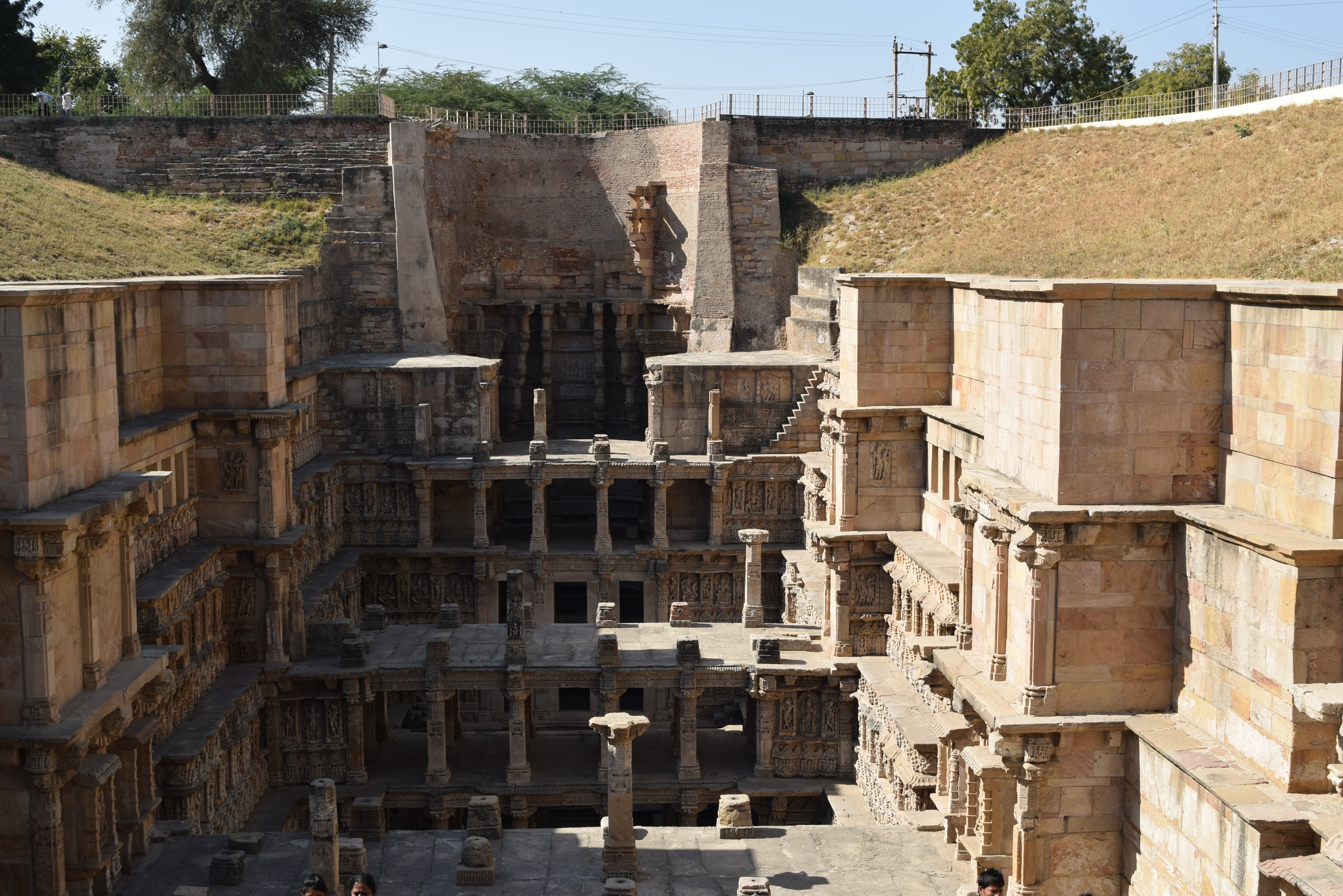
The various tiers of the stepwell with well shaft in far end
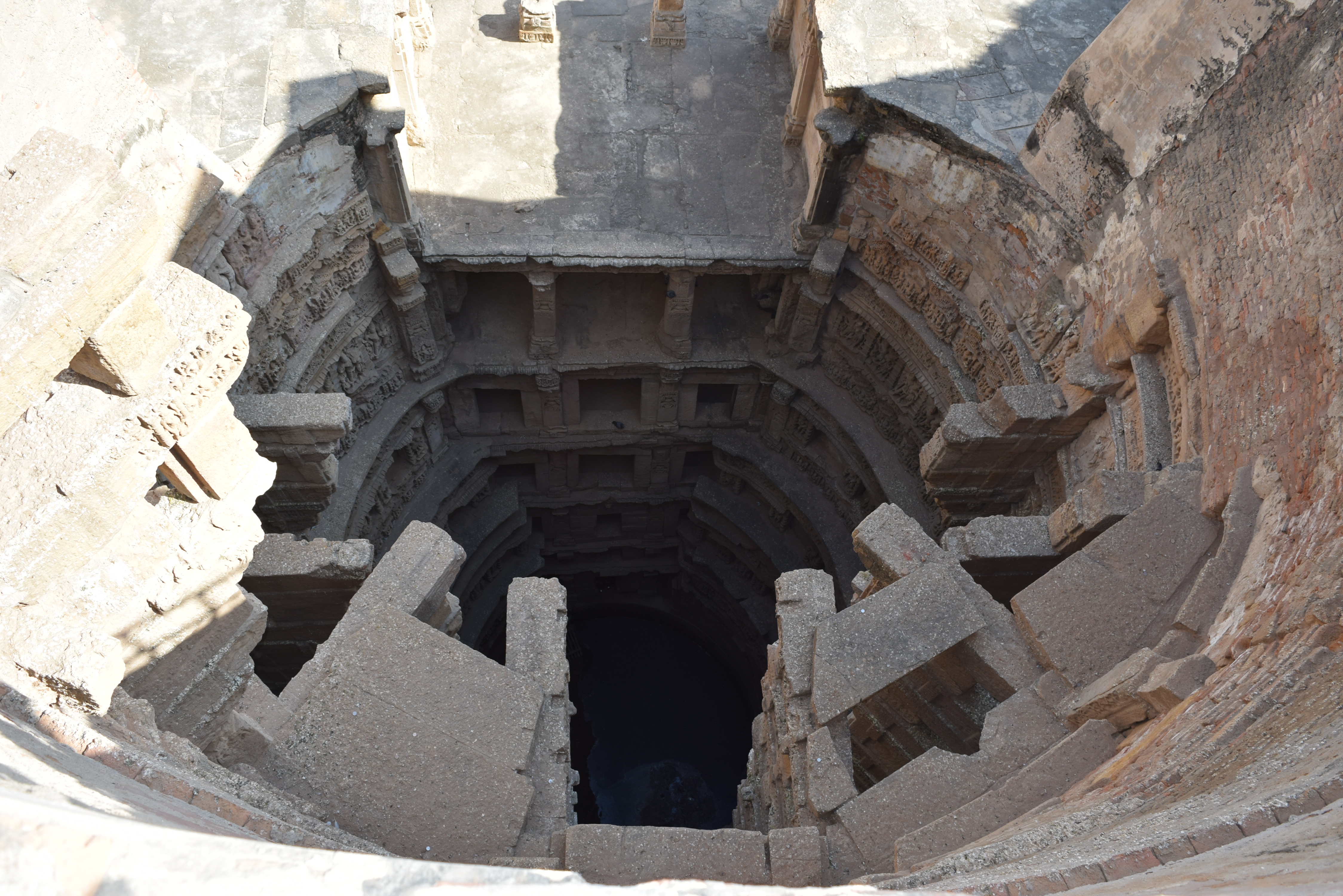
Well shaft of the well
Architecture:
Rani ki Vav is considered to be the zenith of craftsmanship. Having made numerous wells the artisans and sculptors had refined their skill to make such an ambitious size of the step well.
Built in Maru-Gurjara architectural style, it is often referred to as an inverted temple owing to its decreasing size as one moves downward and the plethora of sculptures adorning its every nook and corner.
Scientific logic was well employed in the construction of the baori. The east west orientation of the step well allowed breeze to cool the pavilions while keeping the harsh sun away. With the water shaft at the western end, the water in the well also did not get direct sun thus allowing the water to remain cooler. The first three pavilions were used for public gathering while it was only the fourth level of pavilion that led to the water tank.
Sculptures:
The walls, beams and columns of the step well are adorned with more than 500 elaborate ornate sculptures depicting many mythological and religious stories. There is even a image of Hindu God Vishnu reclining on Shesh Nag the celestial snake on the wall of well shaft.

Wall with sculptures at step well
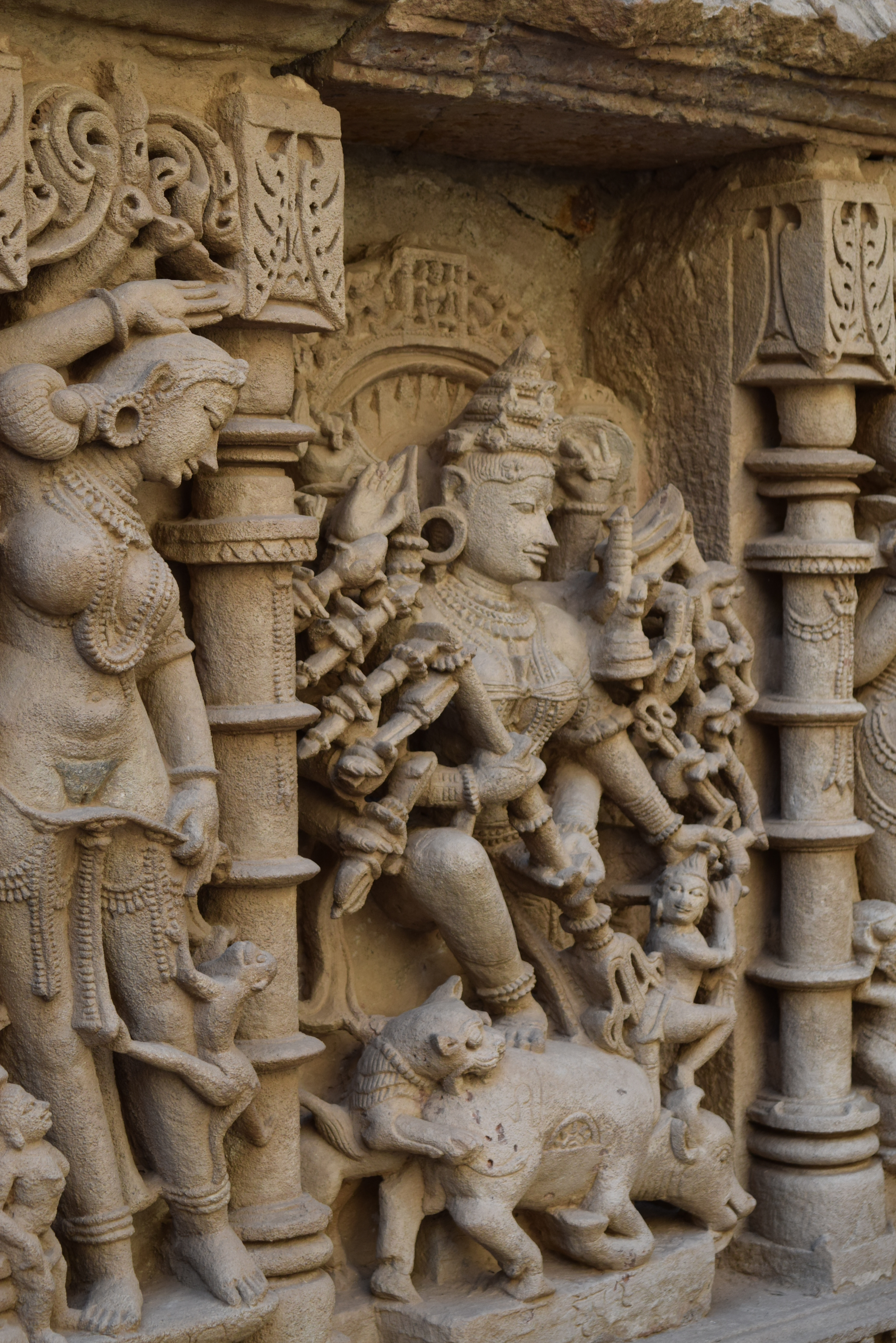
Goddess Mahishasurmardini killing buffalo demon Mahishasur
Sculptures from Vishnu’s Dashaavtar:
The central theme of the Vav are the stories of God Vishnu and his ten incarnations on earth told in “Dashavatar” that are depicted on the walls of Rani Ki vav in great detail on large panels accompanied by almost 1000 minor sculptures of sages, celestial nymphs or Apsaras, Gandharvas.

Vaman Avatar or Dwarf incarnation of Vishnu
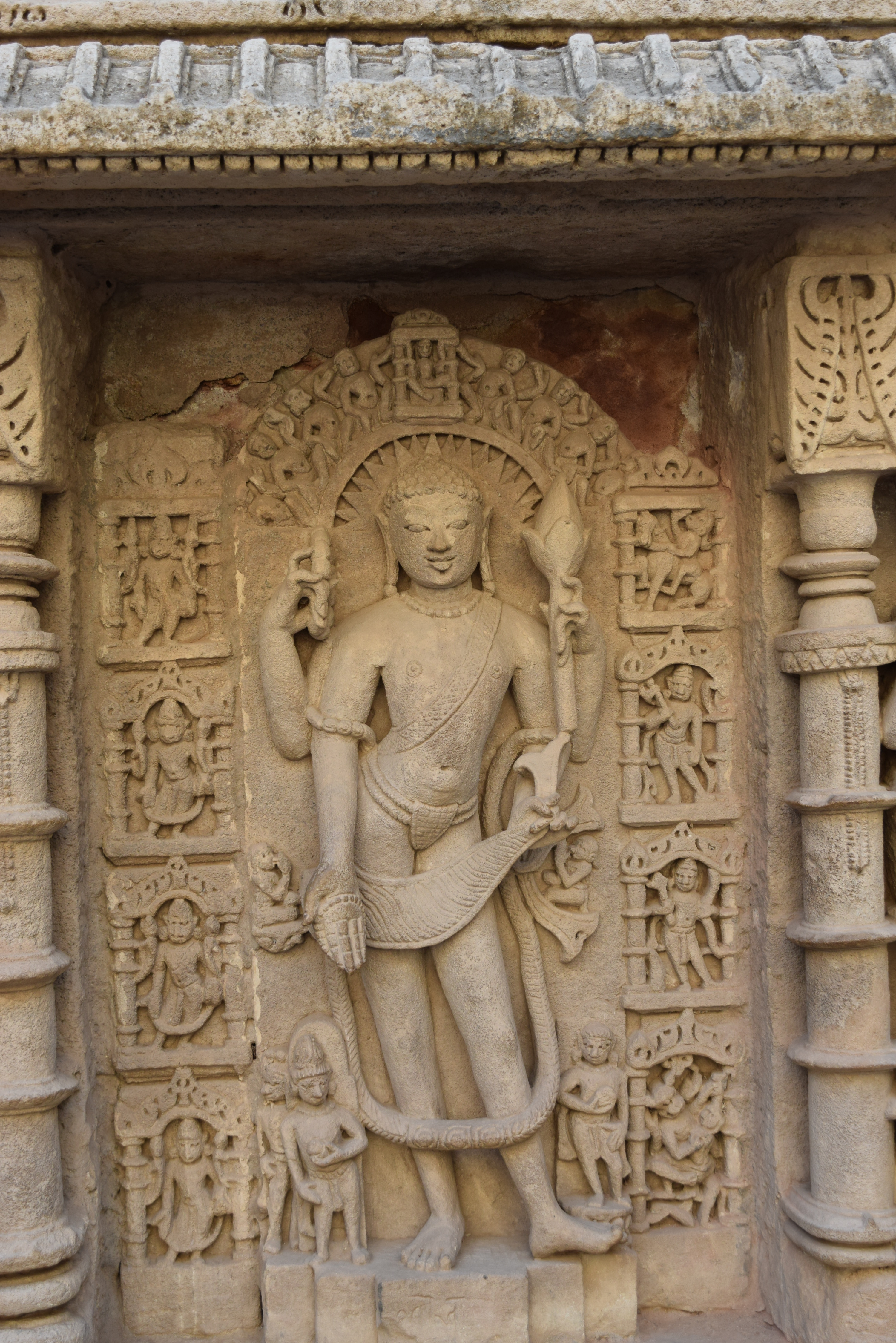
Buddha Avatar of Vishnu
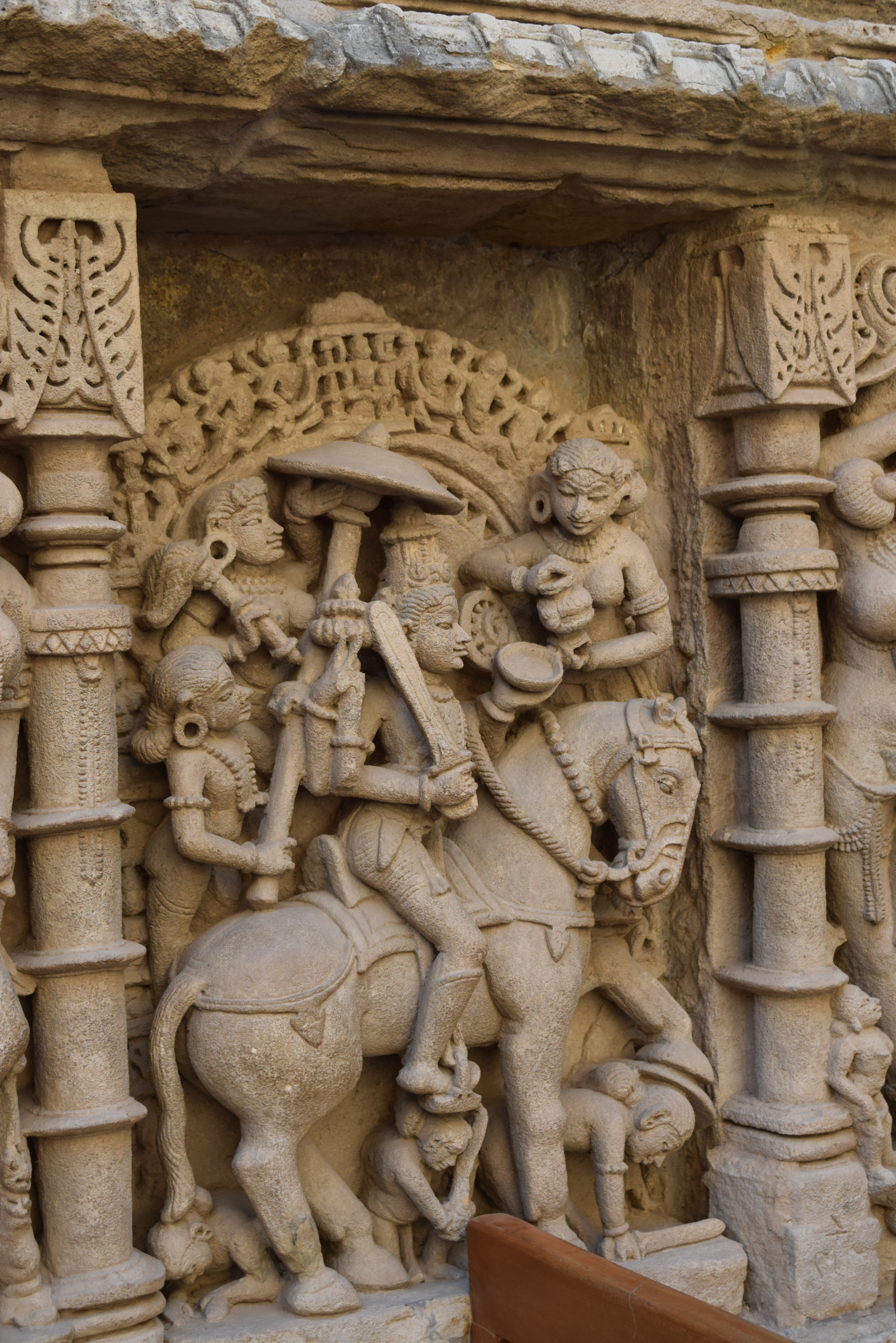
Kalki Avatar which is yet to be born on earth

Varah Avatar or Wild Boar incarnation of Vishnu
Embroidery On Stone:
Besides the sculptures that dot the walls columns and beams, there are numerous patterns etched on panels that literally look like embroidery on stone. These lace like patterns also are traditionally incorporated in the Patola Silk Saris that Patan is famous for.
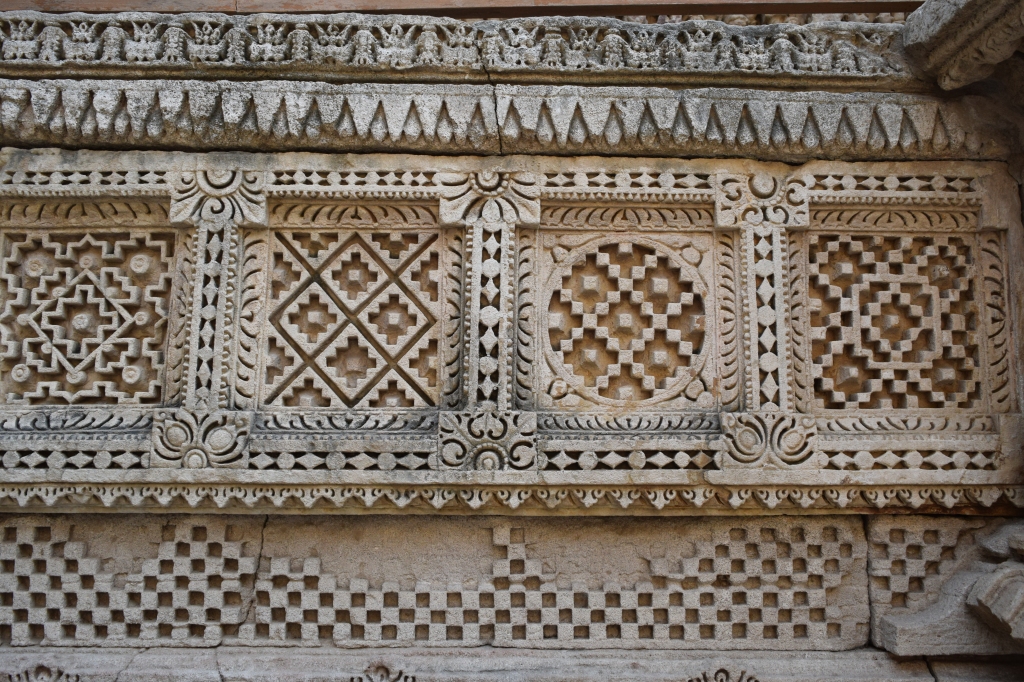
Intricate patterns on stone often depicted on Patola Saris
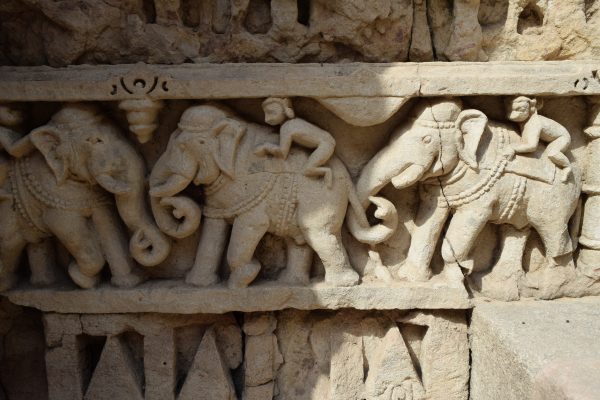
Elephant motifs at Vav
Lost In Sands Of Time:
Rani ki Vav was built near the ancient Rigvedic River Saraswati. A devastating deluge and the changed course of river buried it in the debris and silt for centuries to come.
British archaeologists Henry Cousens and James Burgess stumbled across the well shaft and few pillars peeking out of silt and sand in 1890 and called it a large pit. More excavations under Baroda state in 1940 revealed the huge step well. However it was only in 1986 that major excavation and restoration was undertaken by Archaeological Society Of India (ASI).
It was due to this silting however that the entire structure was preserved over the centuries until excavated.
More Images From Rani Ki Vav:
Things To Know While Visiting:
- Rani Ki Vav has been adjudged the cleanest monument of India.
- There is a token entry fee to visit the monument.
- Stock up food and water before visiting since there is no stall or shop nearby.
- You can not carry food and water once inside the entrance gate. All food is to be left in taxi or private vehicle in the parking area.
- You can also visit Patola Sari museum, a private property, just around the corner near Rani Ki Vav.
- There are not enough strret directions and sign boards to direct you till the site. It is better to ask around once you start navigating the narrow streets.
- Tourists are not allowed to descend beyond second tier of pavilions.
- The monument closes for visitors at 1700 hrs in evening.
How To Reach:
- By Road: Private vehicles or Interstate Buses from Ahmedabad are available. It takes approximately 2-2.5 hours for the road trip.
- By Rail: Nearest railway station is Mehsana about 1.5 hours from Patan. Buses run from Mehsana to Patan.
- By Air: Nearest airport is Ahmedabad.









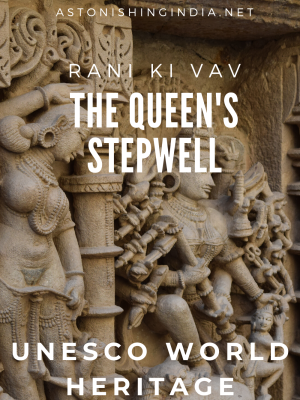

Fantastic place and great captures. Stepwells are some architectural marvel!!
LikeLiked by 1 person
Fantastic place and great captures. Stepwells are some architectural marvel!!
LikeLiked by 1 person
yes…there is one at Delhi too the Agrasen Baoli and at Agra fort which is closed for visitors
LikeLike
i was already here 😉
LikeLike
Thanks again… 🙂 there is one at Jaipur ‘Abhaneri or the Chand Baoli’ I have written something about it too.
LikeLiked by 1 person
Oh cool.Looks like there are quite a few step wells.
LikeLiked by 1 person
It is the British who closed all the baoris and step wells and introduced canal system, otherwise the village life was centered around baolis as main community interaction place
LikeLiked by 1 person
I never knew that. Thanks for the new knowledge 🙂
LikeLike
🙂
LikeLiked by 1 person
I like the information that’s presented while describing your trip. A travel blog is at its best when it tells you about another culture while also painting a picture of excitement.
I think I would like to see pictures throughout the article instead of all the pictures bunched together, but that’s just me.
The pictures are excellent.
LikeLiked by 1 person
Thank you….will keep your suggestion in mind in the next post.
LikeLike
Love the architecture!
LikeLike
Hi Shoma,
Unlike other travel bloggers, who share only the best part and nice pics of their travel, very wise of you to do otherwise and warn us about the difficulties or probable dangers to be encountered while travelling to different places. It’s informative and worth considering.
LikeLike
thank you Anay. Glad you liked the info.
LikeLike
Reblogged this on Santa's Reindeer and commented:
Beautiful pics… would love to visit someday…
LikeLike
Hi Shoma! I’ve nominated you for the Liebster Award, since your blog is one of my absolute favorites! Keep up the great work;) To accept this award:
https://opulentindia.wordpress.com/2015/02/15/and-the-liebster-award-goes-to/
LikeLike
Thanks a lot but sorry I can not accept as I have been nominated for it earlier. Thanks so much for liking my blog. I am absolutely honored.
On 16-Feb-2015 8:56 am, “Astonishing India” wrote: > >
LikeLiked by 1 person
I visit Gujrat nice my Favorite place Mt. Abu in Rajistan as well as Paldi Ahmadabad.
LikeLike
Have you ever seen the step well of adalaj near gandhinagar in Gujarat?
LikeLike
Yes I have. There is a post about it too on the site. Thank you for reading the post.
LikeLike
Engineering marvels related to water harvesting are stunning we find in ancient monuments. The water reservoir constructed in these monuments are designed in such a fashion so as it may store the water in its natural form. I came across one of such marvels in the British period port building situated in Mahanadi River near Bay of Bengal in Paradip in Odisha. The sea water is not drinkable, hence the building had been designed to store rainy water for human consumption.
The photography skill you have is outstanding as all the pics depict themselves the minute sculptors they possess. Description of the step-well is simply amazing. Few pics capturing the surroundings might have supported the descriptive in more friendly manner, as i think because only two pics have the subject other than the sculptor arts.
Thanks for taking us to Rani ka vav at Patan, one of the UNESCO World Heritage.
LikeLike
Thank you. Yes indeed these water reservoirs were great engineering skills.
I shall remember to shoot more pictures of surrounding area for my next site.
LikeLike
excelent pics of Patan Gujrat Rani ki Vav, very nice
LikeLike
thank you Sharda
LikeLike